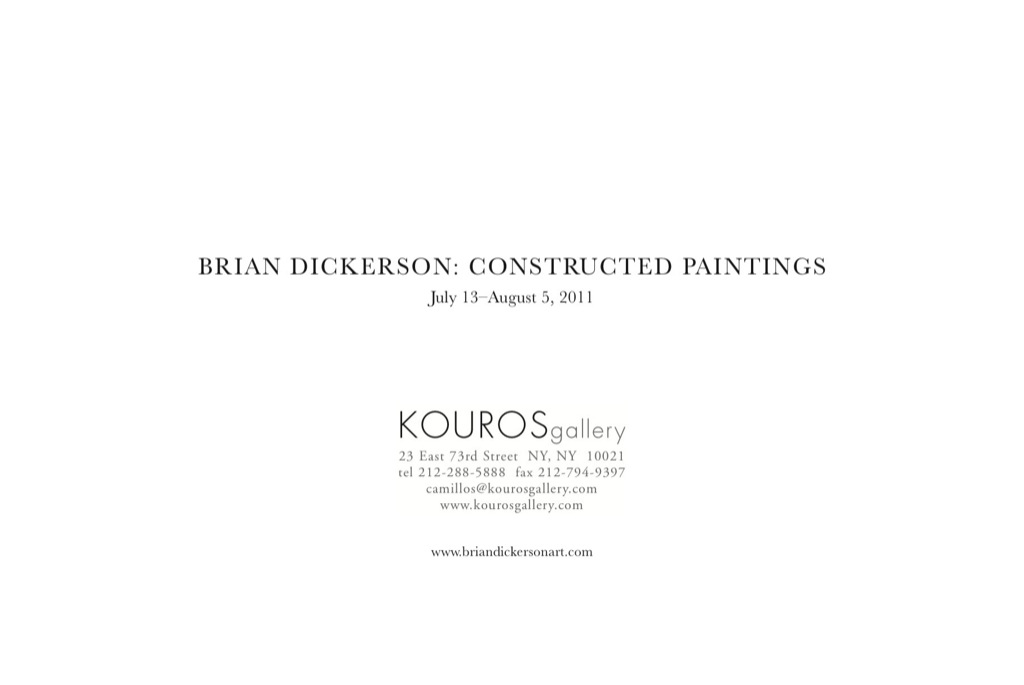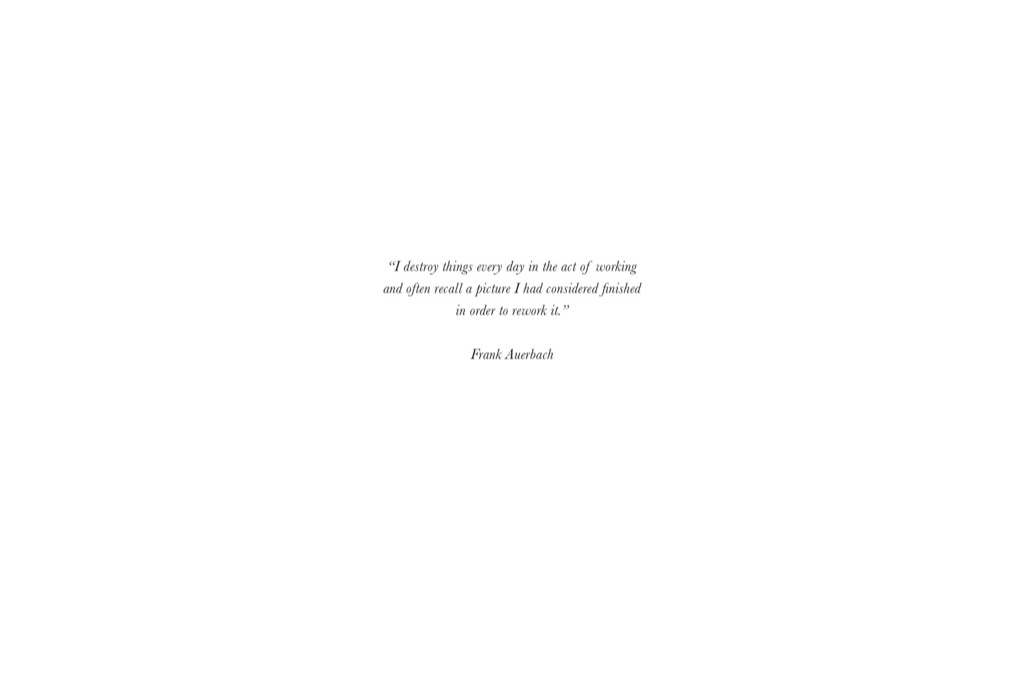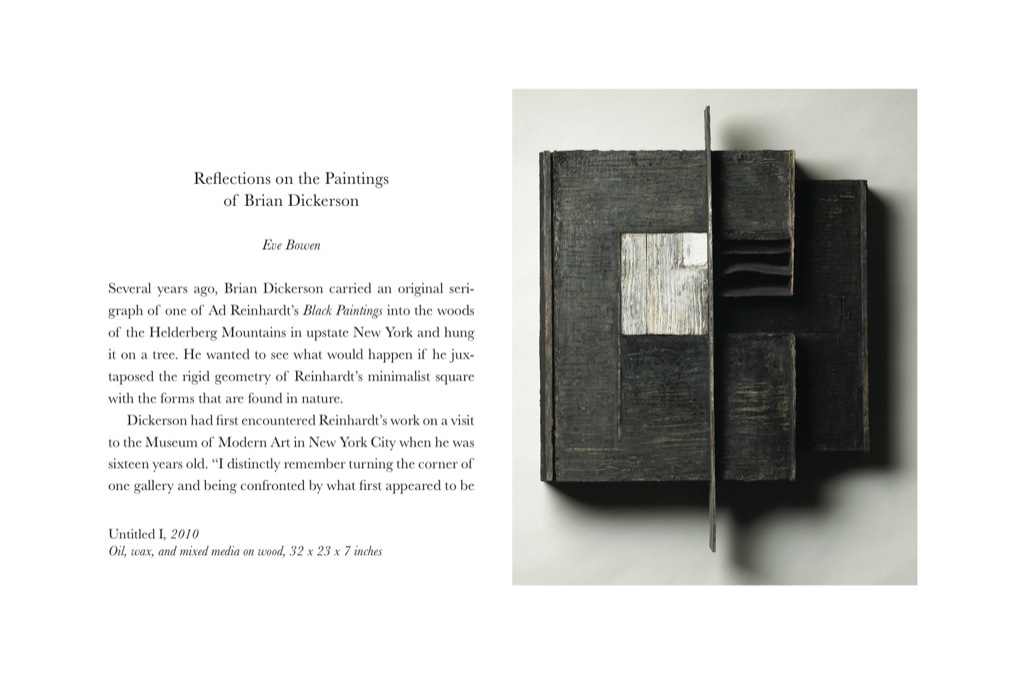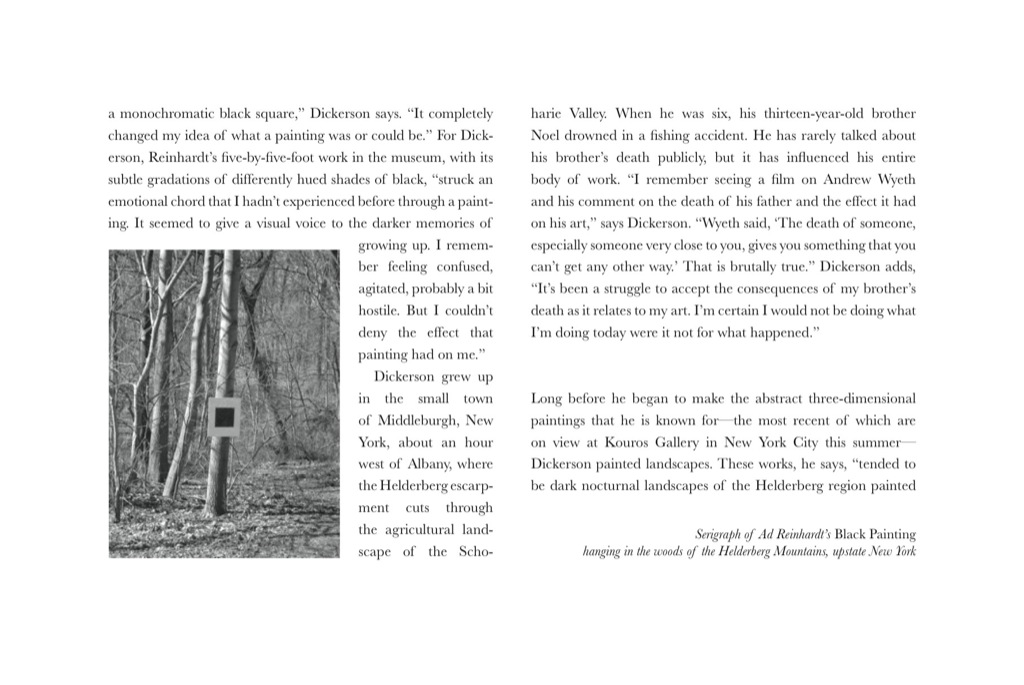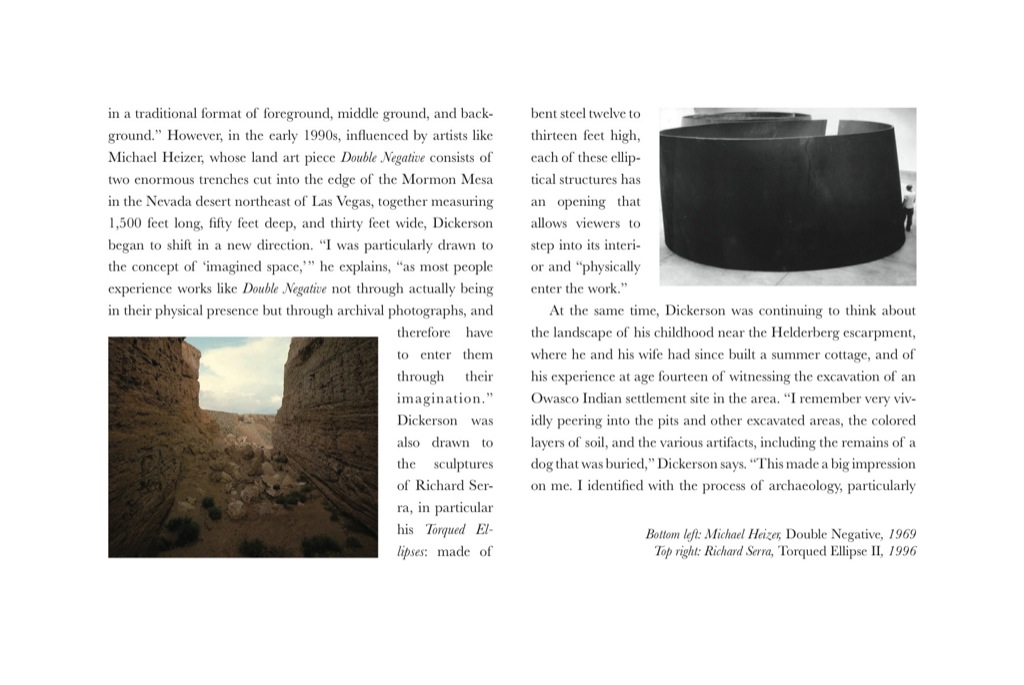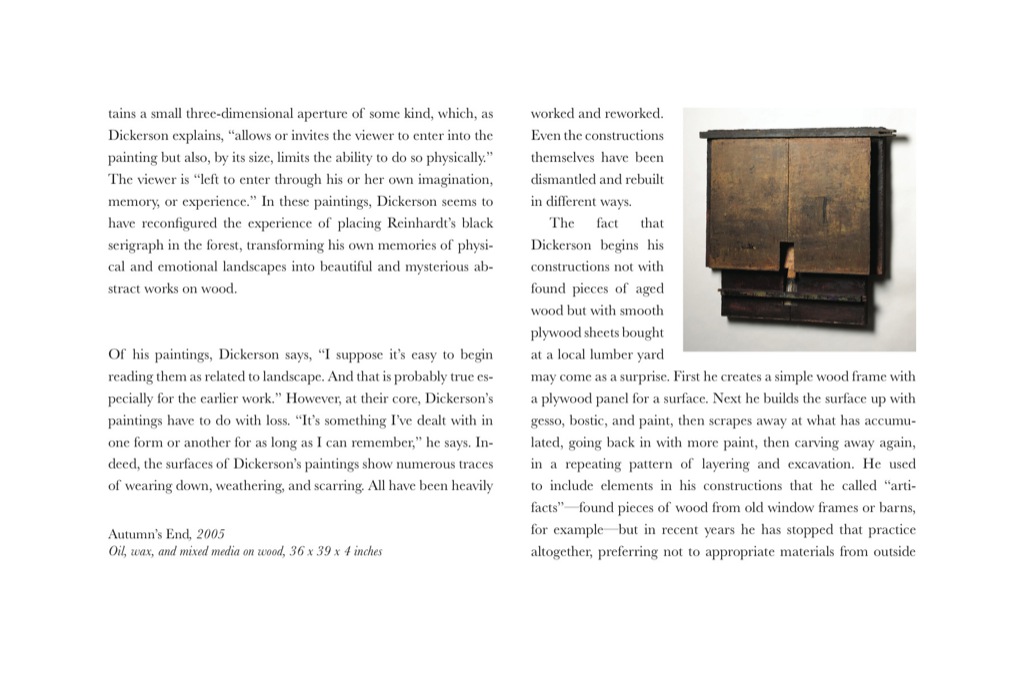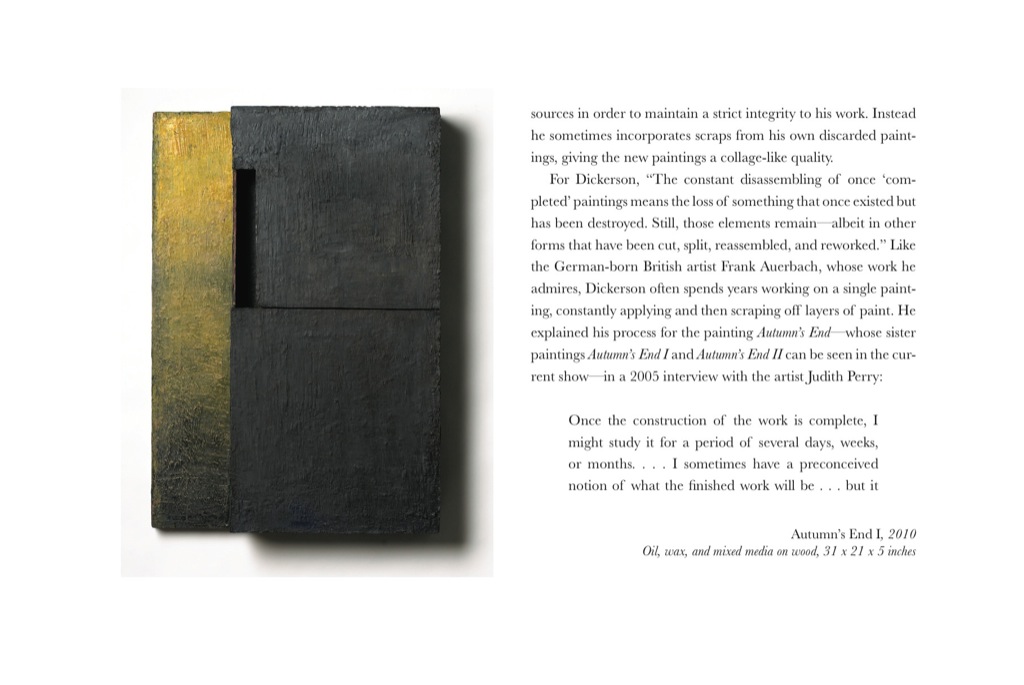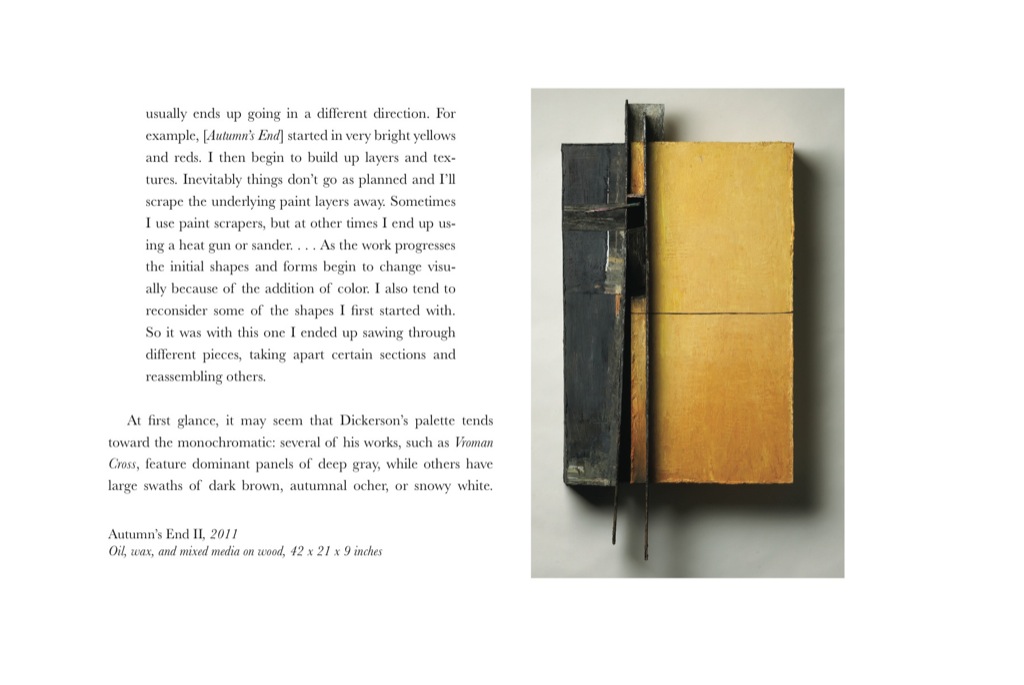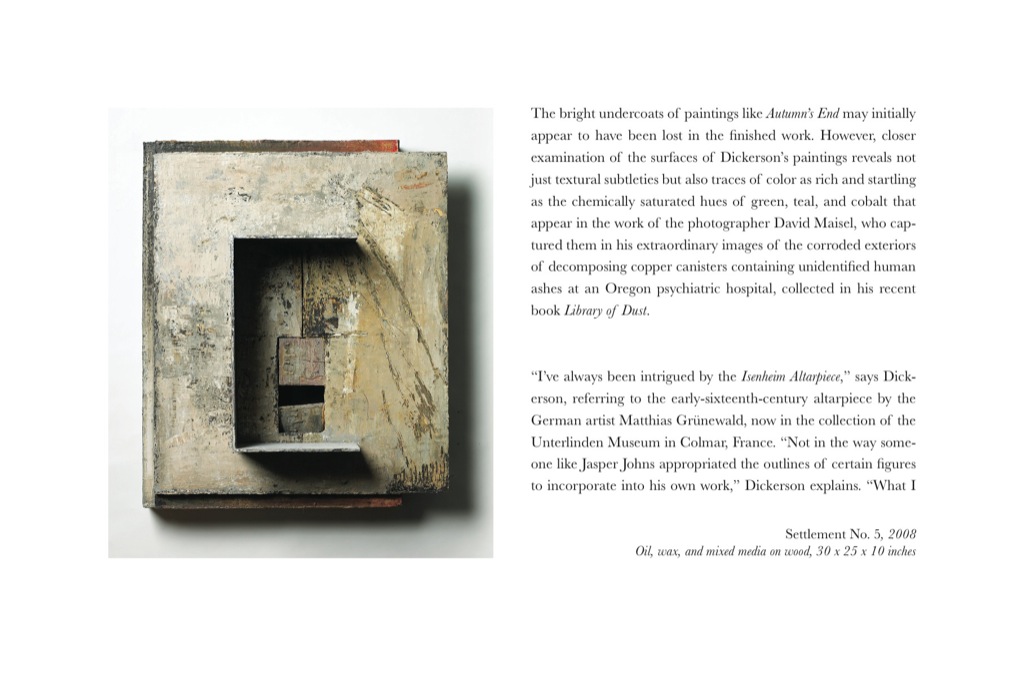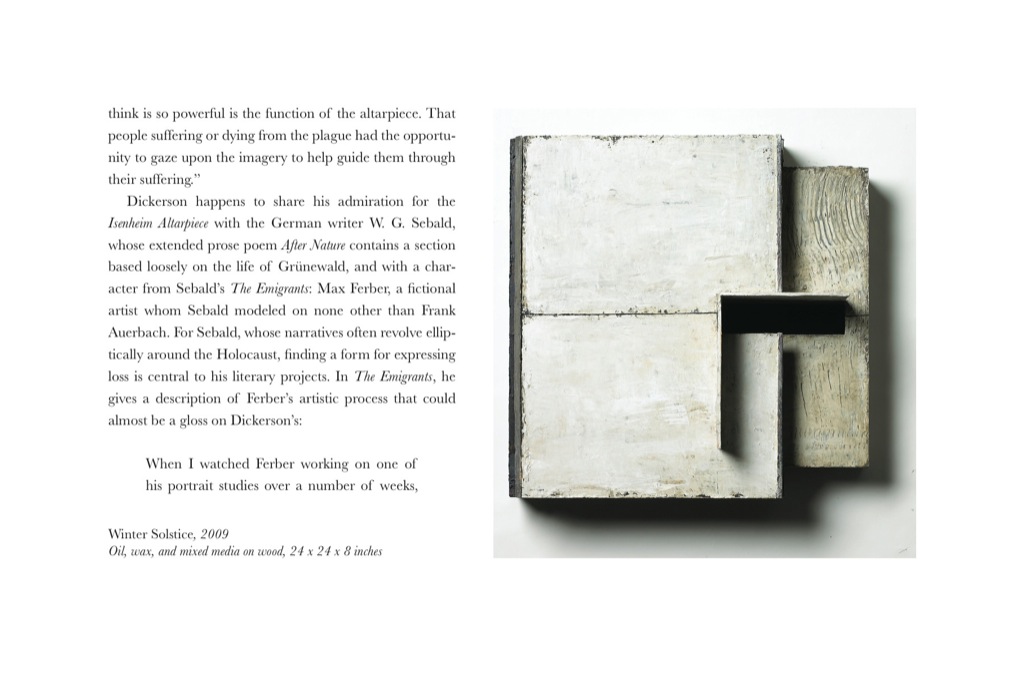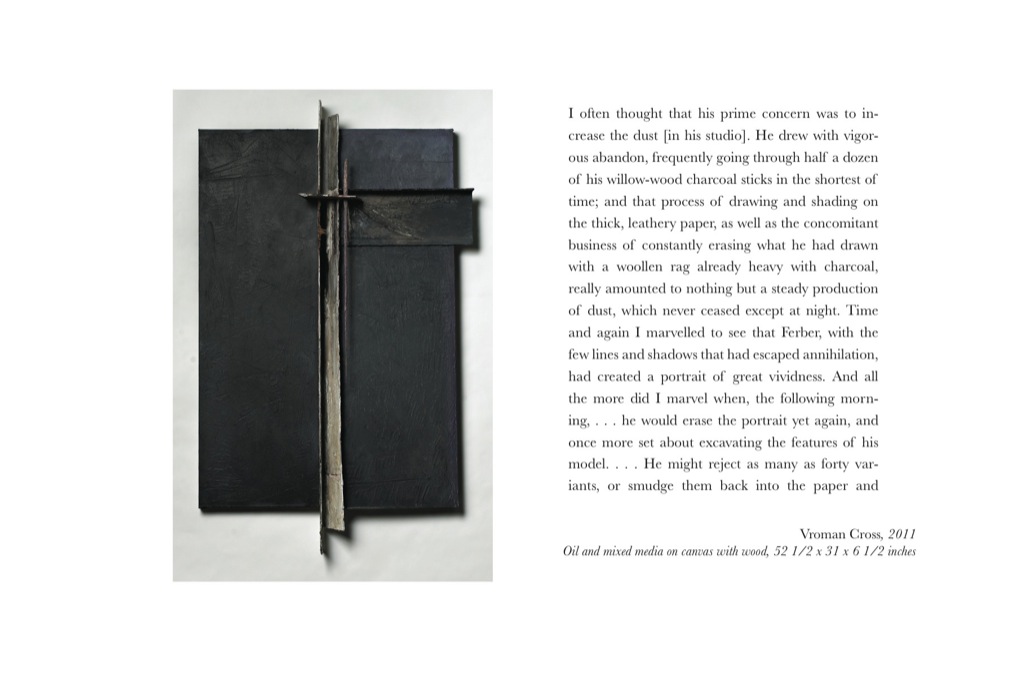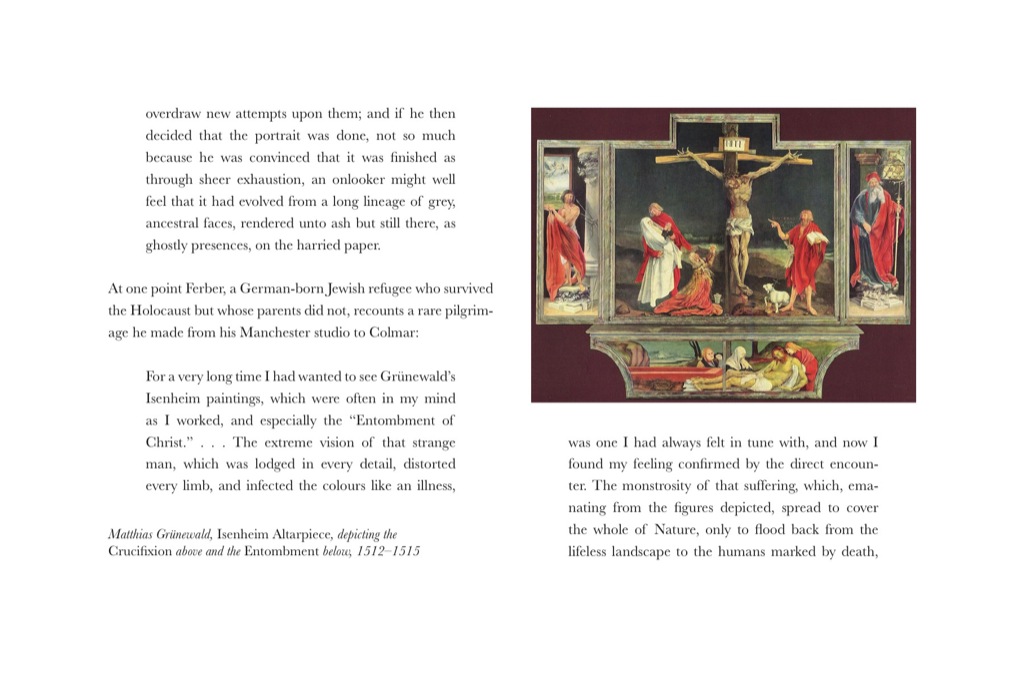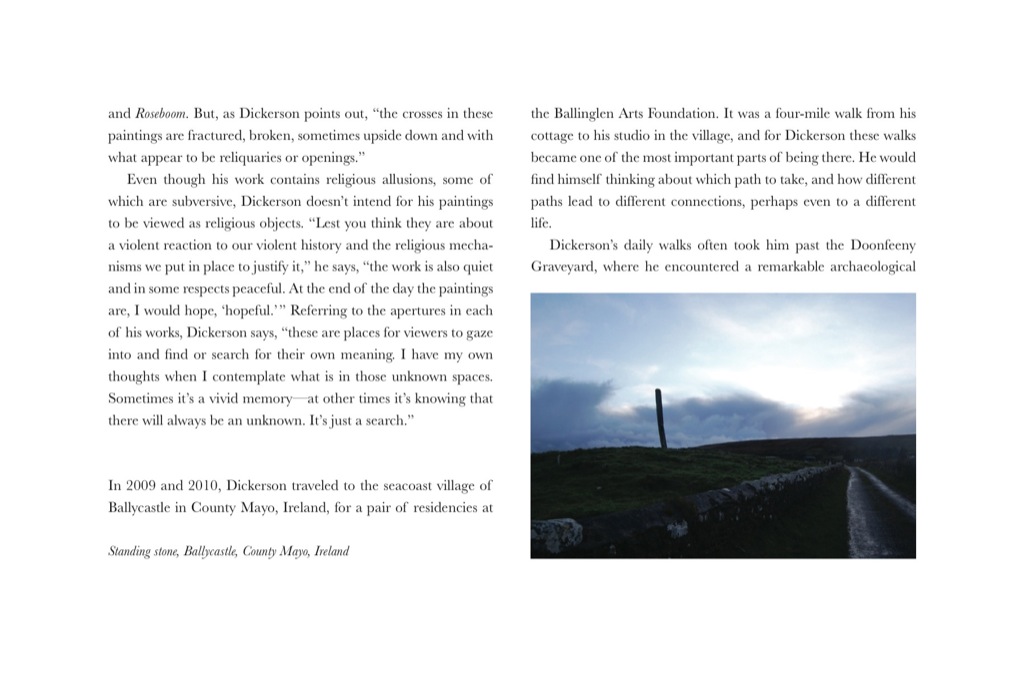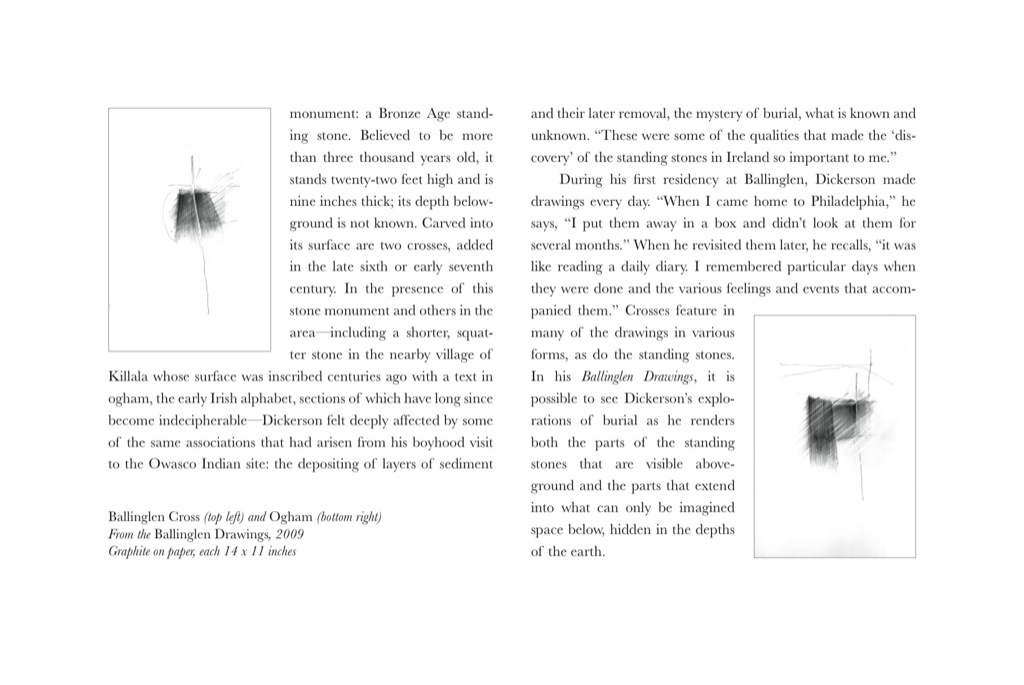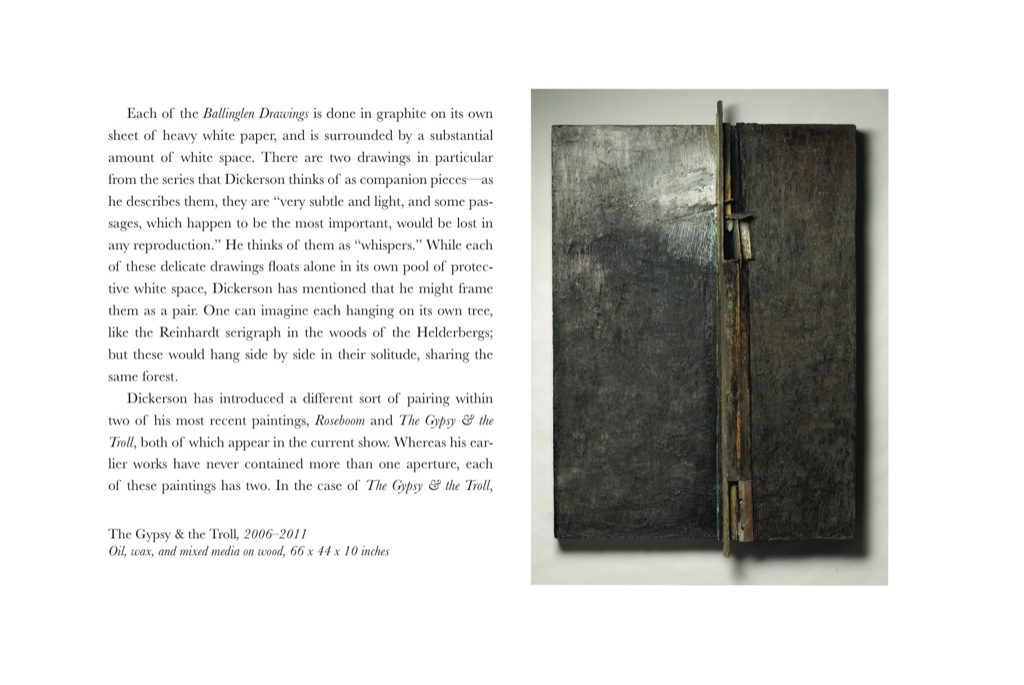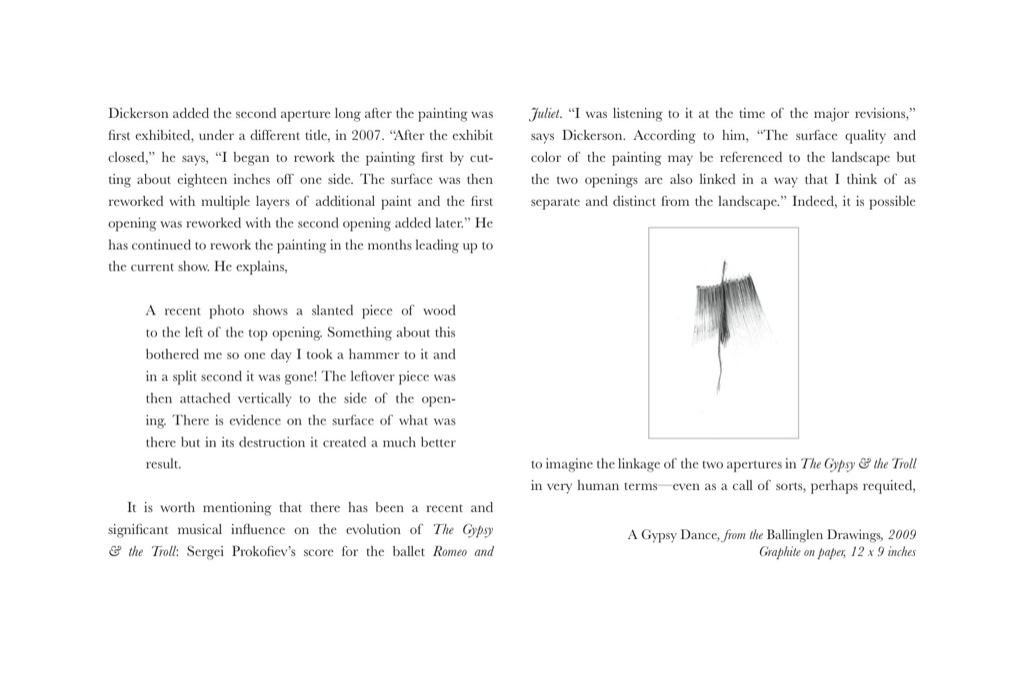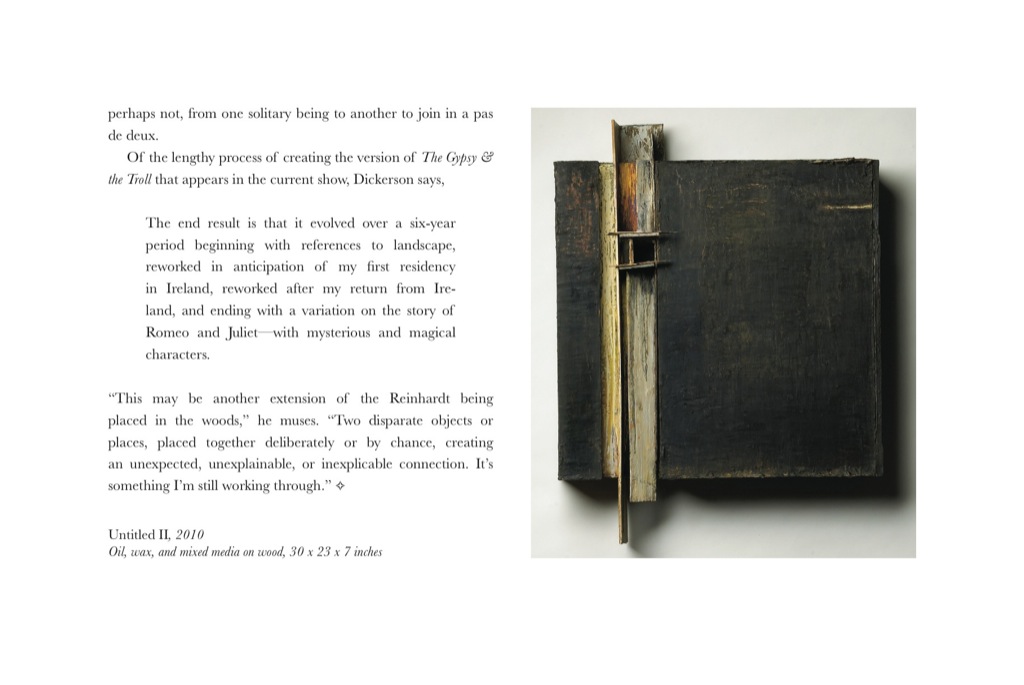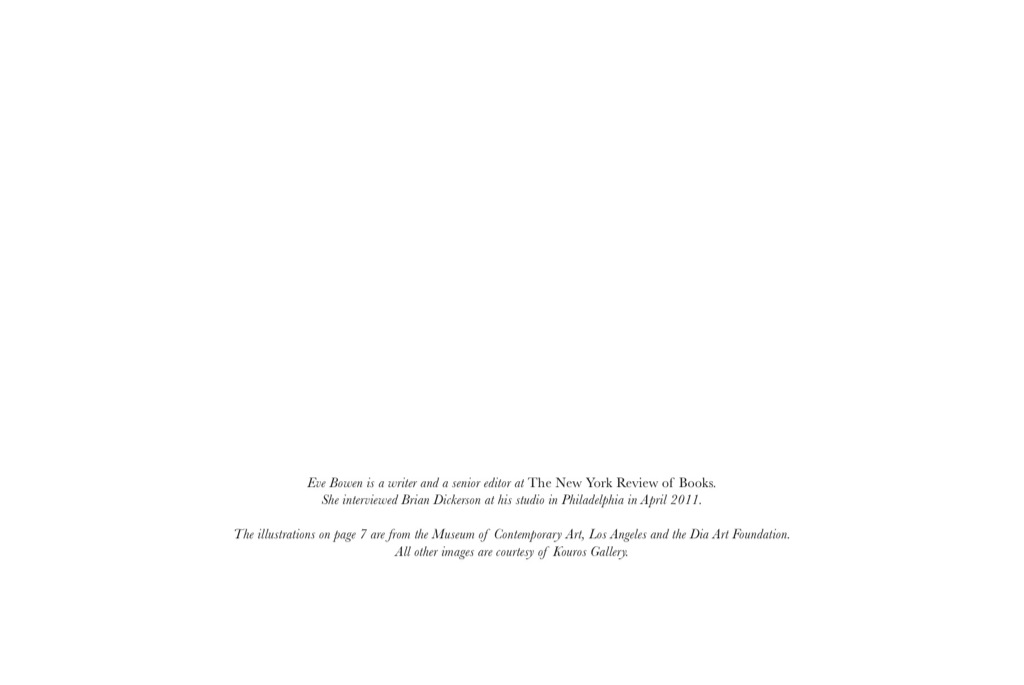On Brian Dickerson’s Constructed Paintings
By Carter Ratcliff
Brian Dickerson’s calls his works “constructed paintings,” a phrase that warns us, subtly, against relying too heavily on our familiar ways of looking. Face to face with a painting, we usually look into its depths. Even a monochrome canvas preserves the metaphor of window. Dickerson’s paintings persuade vision to stay on their surfaces, which are inexhaustibly rich. After covering a birch panel with gesso, he applies layers of paint, often scraping them down in preparation for further layers. The resulting textures evoke the effects of weather and long seasons of intense sunlight. You feel the weight of his works, for they are objects as much as they are images. Yet Dickerson is not a sculptor.
Between Known and Unknown Worlds
By Christopher C. Cornog
Brian Dickerson’s artwork is about the great mysteries. Throughout his life and professional career, he has always been drawn to the edges, the intersections, and the boundaries of things. He is organically attracted to the shadows, reflections, and other ambiguities that animate the spaces between one dimension and the next, one reality and another, between known and unknown worlds.
Brian Dickerson’s Cairns
By Miriam Seidel ~ Curator, critic and Corresponding Editor of Art In America
Brian Dickerson is an artist who knows how to wander, and how to make his way through uncertainty. Seeing the stone cairns of rural Ireland, he recognized them for what they were: mediators of mysterious places, markers for the lost, messages from the past. In Cairns, his new series of constructed paintings, he brings this understanding into a new form.
In each painting we come across a form of knotted angles, made of what is at hand in his studio—torn bits of wood, fragments of old work—as a cairn is made of whatever nearby stones can be found. These cairn-forms rise out of fields of thick, monochrome paint that suggest dried wheat, snow, dark skies.
Dancing with the Dark
By Miriam Seidel ~ Curator, critic and Corresponding Editor of Art In America.
An encounter with one of Brian Dickerson’s constructed paintings, with their slowly accreted surfaces and mysterious openings, asks us to move with the artist from what is seen to what cannot be seen. The explicit elements—visual, tactile, and structural—guide us beyond themselves to a region with no descriptors, which stymies words while allowing experiences of uncommon depth.
Surface. Dickerson’s surfaces feel at times like walls, enclosing something inside, and at times like turbulent atmosphere, offering immersion. Their final effect reflects a long process of painting layer over layer—work that is often unmade through scraping, sanding or heat torch, then painted over again. Bright base layers are covered by darker ones, yielding nuances suggesting repainted walls, or smoke and embers or stormy skies.
Shows at Seraphin Gallery
Brian Dickerson’s rugged, mysterious sculptural paintings
By Victoria Donohoe
Art Critic for the Philadelphia Inquirer
The wonder of Brian Dickerson’s recent rugged 3-D paintings on wood in his solo “Constructed Paintings and Drawings from Ballinglen” at Seraphin Gallery is the immediate sense of quiet and mystery they impart. While he was, of course, informed by the remote, artist-friendly locale in northwest County Mayo, Ireland, which he expects to visit again next fall, Dickerson’s original inspiration was the excavation of an Owasco Indian settlement he watched at age 13 near his childhood home in upstate New York – the colors of the layered soil, the wooden grids, the hidden artifacts.
Artists Shine In Works Rugged to Muted
By Victoria Donohoe
Art Critic for the Philadelphia Inquirer
Brian Dickerson and Sarah Bowen, exhibiting their paintings in tandem in a show at West Chester University, both approach their subjects as if from a great distance in time. And each of these college art teachers- he at Drexel University, she at Vermont College- besides having a distinctive personality and approach, thinks of art as transformation and as self –discovery.
Mystery abounds in the rich and intriguing imagery of Dickerson’s three-dimensional abstractions painted on his wooden constructions. The most striking of these were inspired by his boyhood recollection of attending the excavation of an ancient settlement site of the Owasco Indians, ancestors of the Iroquois, near his family home in New York’s Helderberg Mountain region, near Albany.
The Art Blog
Diverse Meanderings at CFEVA and Tiger Strikes Asteroid
By Chip Schwartz
January 25, 2011
There is a smorgasbord of styles at the Center for Emerging Visual Artists right now. The show, entitled Beyond Abstraction, was assembled by visiting curator Katrin Elia and consists of eight artists with mediums as wide-ranging as video and encaustic to fabric and wood. With such disparity even within the realm of abstractions, it is necessary to focus on a few aspects of the show.
Continue Reading at theartblog.com
Memories of Home
By Edward Sozanski
Philadelphia Inquirer Art Critic
The subdued and vaguely mystical paintings that Brian Dickerson is showing at the Mangel Gallery evoke the Schoharie Valley west of Albany, N.Y., where he grew up. Specifically, the paintings refer to the Helderberg escarpment, which runs through the region.
The references are oblique because the paintings, all on wood constructions, are abstract. Assembled from pieces of aged wood, with tiny compartments cut into their faces, they project the character of reliquaries. The “relics” in this case are the artist’s memories of his boyhood in a geographically striking and archaeologically fertile place.
Resonant Journeys
Journeys Revealed: A Visual Record of Discovery
By Judith Perry
Art at its highest level shows us who we are and who we might be. Courage leads the way: it takes courage to explore the geography of our own experience, to understand how it has shaped us and then be willing to reveal it to others. Sarah Bowen and Brian Dickerson have individually built their lives around a committed studio practice and a strong sense that their visual artwork is a form of inquiry. Their work is fostered by their engaged teaching practice and by a meaningful and supportive dialogue with each other that spans more than a dozen years. As an artist myself and a friend to both artists, I am thrilled to be involved in this ongoing conversation about how we move and direct our lives as creative people.
What resonates in the journeys of these two artists goes beyond shared interests and the formal qualities of their work. This traveling exhibition gives us an opportunity to look at the work of two individuals who have made very conscious choices about the kind of artistic lives they would pursue. It is the integrity behind the cumulative decisions to grow as artists that has created such authentic visual expressions.
Exploring Autumn’s End
By Judith Perry
My conversation with Brian Dickerson took place over several weeks via email and telephone calls as he prepared for an exhibition of ‘The Helderberg Paintings’ at Mangel Gallery in Philadelphia. In some ways this conversation began many years ago while we were in graduate school. Even then the region of New York State where he grew up was an important component of his work as was music. He brings to the work a variety of experiences that he has continually cultivated over these many years.
Whether looking at the formal issues of a nearly monochromatic palette, the scale, surface or structural elements there is also and equally important such influences as the physical region, music and memory. In addition to all that, there is the working process which is in itself an important element of the work. Our conversation touched on all of these things and more.
Paul Shakespear at Howard Yezerski Gallery, and Brian Dickerson at Seraphin Gallery in Philadelphia
Nate Risteen – The Boston Art Review
Sunday, May 20, 2012
In the past I’ve remarked on how hard it can be to see contemporary figurative art in Boston, and how different this is from Philadelphia, where good figurative painting seems to be everywhere.Philly’s painters also manage to ignore the science-based abstraction of many Boston artists, with their silence coming as a subtle rejection of that interest. But I stumbled on two shows this month, one in each city, which argue against these regional distinctions. Neither has Philadelphia’s figurative leanings, nor does either slide into the biomorphic abstractions that dominate galleries in Boston. Paul Shakespear and Brian Dickerson have both mounted shows that focus on material and surface qualities, with similarities in tone and composition that stand for another, shared direction in American painting.
Reflections on the Paintings of Brian Dickerson
Eve Bowen – writer and senior editor at the New York Review of Books.

